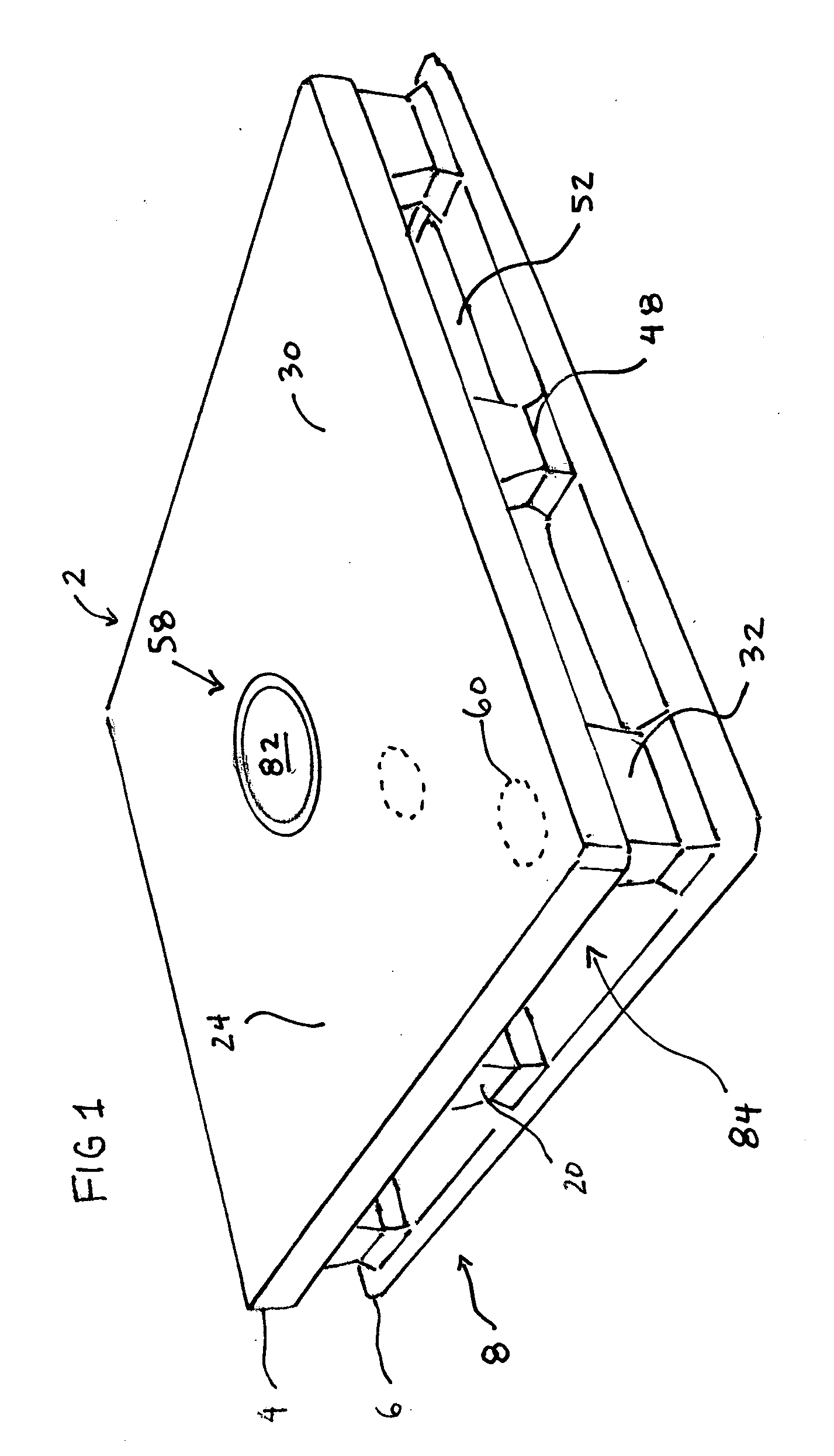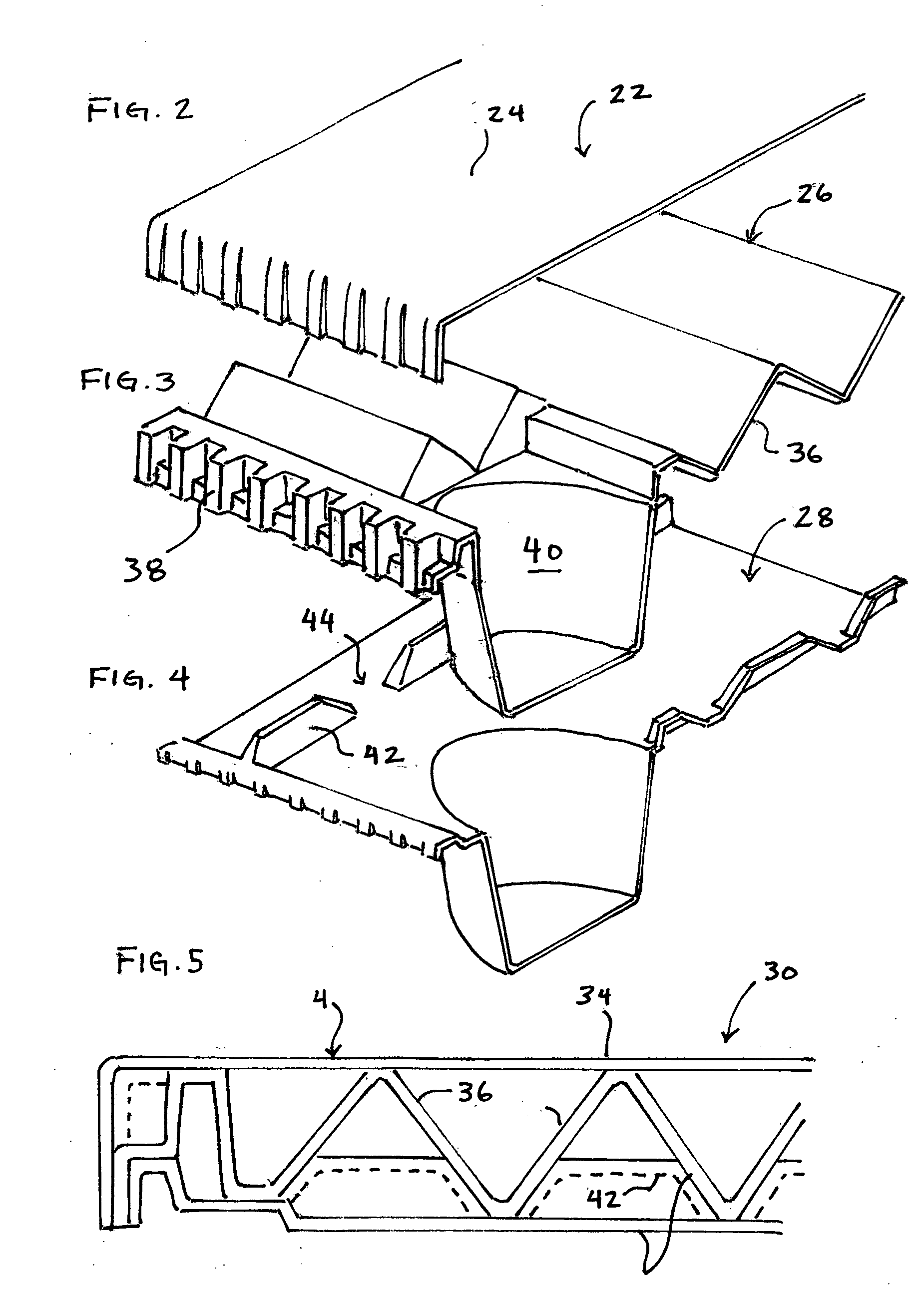RF-enabled pallet
a technology of pallets and rfs, applied in the field of plastic pallets, can solve the problems of difficult to keep track of wooden pallets, add user costs, and wood pallets have problems
- Summary
- Abstract
- Description
- Claims
- Application Information
AI Technical Summary
Benefits of technology
Problems solved by technology
Method used
Image
Examples
Embodiment Construction
[0039] The present embodiments of pallet structures are merely representative of the principles of the invention and are not intended to limit the scope of the invention or application and uses of the invention. Furthermore, there is no intention to be bound by any expressed or implied theory presented in the preceding technical filed, background, or brief summary of the following detailed description. For example, the pallet structures can be made of any plastic, wood, metal, cellulose material or combination thereof. The pallet structures may be injection molded, blow molded, compression molded, differential pressure formed, stamped, die-cut, fabricated and assembled, welded, and bonded together. The pallets can take the form of GMA style 48×40 inch pallets, nine-legged nestable pallets, shipping trays, returnable dunnage and the like. Other products falling within the scope of the invention include IBCs, RPCs, ULDs, fuel tanks and the like.
[0040] One preferred embodiment involve...
PUM
| Property | Measurement | Unit |
|---|---|---|
| sizes | aaaaa | aaaaa |
| time | aaaaa | aaaaa |
| height | aaaaa | aaaaa |
Abstract
Description
Claims
Application Information
 Login to View More
Login to View More - R&D
- Intellectual Property
- Life Sciences
- Materials
- Tech Scout
- Unparalleled Data Quality
- Higher Quality Content
- 60% Fewer Hallucinations
Browse by: Latest US Patents, China's latest patents, Technical Efficacy Thesaurus, Application Domain, Technology Topic, Popular Technical Reports.
© 2025 PatSnap. All rights reserved.Legal|Privacy policy|Modern Slavery Act Transparency Statement|Sitemap|About US| Contact US: help@patsnap.com



